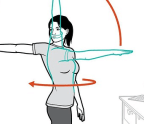
One of the most common side effects of taking insulin or certain types of diabetes pills is hypoglycemia, or low blood glucose. Hypoglycemia can be mild, moderate, or severe. It can also strike fear in people who are at risk, and sometimes this fear can be a barrier to taking diabetes medication in the amount prescribed.
What is hypoglycemia?
As mentioned above, hypoglycemia means low blood glucose (sugar). According to the American Diabetes Association’s Standards of Medical Care—2021, “Hypoglycemia is the major limiting factor in the glycemia management of type 1 and type 2 diabetes.”
Hypoglycemia is defined as a blood glucose below 70 mg/dl. But signs and symptoms of hypoglycemia can vary from person to person, and certain symptoms are more worrisome than others. The American Diabetes Association has classified hypoglycemia into three levels based on blood glucose readings as well as symptoms:
• Level 1: A glucose reading less than• Level 2: A glucose reading less than 54• Level 3: A severe event characterized by altered mental and/or physical status that requires assistance






